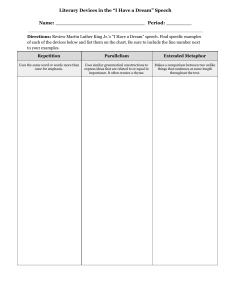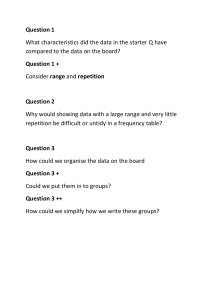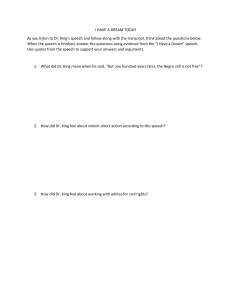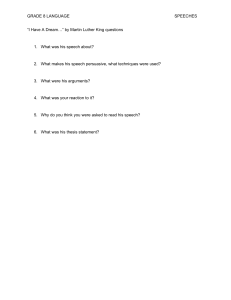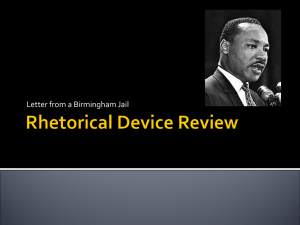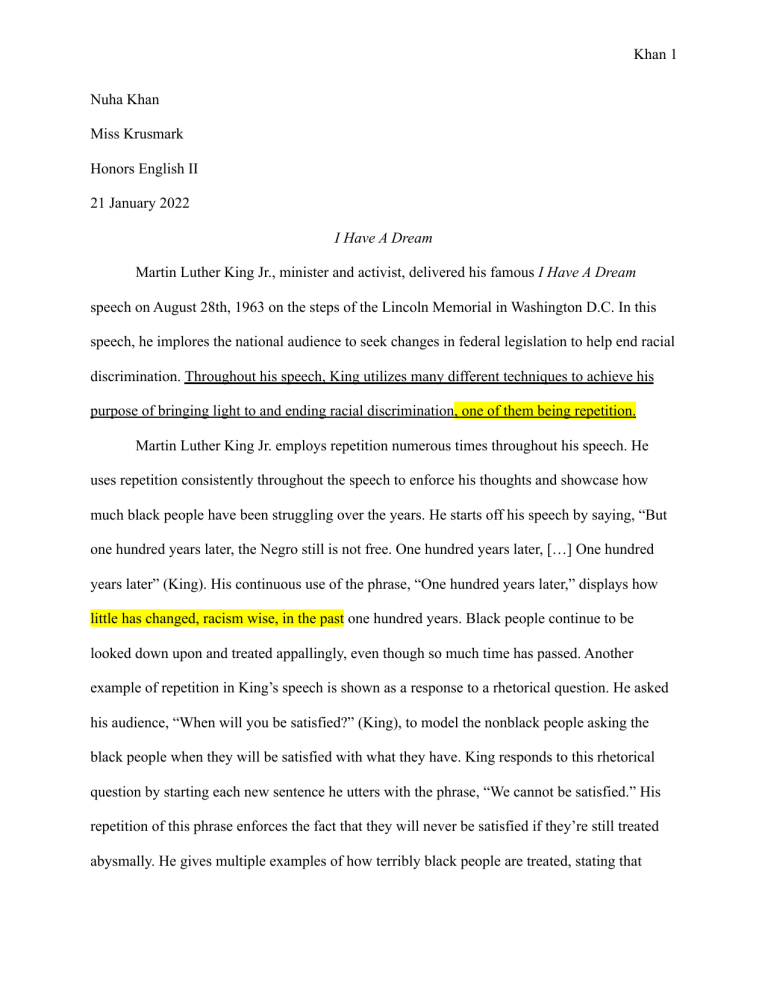
Khan 1 Nuha Khan Miss Krusmark Honors English II 21 January 2022 I Have A Dream Martin Luther King Jr., minister and activist, delivered his famous I Have A Dream speech on August 28th, 1963 on the steps of the Lincoln Memorial in Washington D.C. In this speech, he implores the national audience to seek changes in federal legislation to help end racial discrimination. Throughout his speech, King utilizes many different techniques to achieve his purpose of bringing light to and ending racial discrimination, one of them being repetition. Martin Luther King Jr. employs repetition numerous times throughout his speech. He uses repetition consistently throughout the speech to enforce his thoughts and showcase how much black people have been struggling over the years. He starts off his speech by saying, “But one hundred years later, the Negro still is not free. One hundred years later, […] One hundred years later” (King). His continuous use of the phrase, “One hundred years later,” displays how little has changed, racism wise, in the past one hundred years. Black people continue to be looked down upon and treated appallingly, even though so much time has passed. Another example of repetition in King’s speech is shown as a response to a rhetorical question. He asked his audience, “When will you be satisfied?” (King), to model the nonblack people asking the black people when they will be satisfied with what they have. King responds to this rhetorical question by starting each new sentence he utters with the phrase, “We cannot be satisfied.” His repetition of this phrase enforces the fact that they will never be satisfied if they’re still treated abysmally. He gives multiple examples of how terribly black people are treated, stating that Khan 2 “[they] will not be satisfied until justice rolls down like waters and righteousness like a mighty stream” (King). King uses this specific simile to express that he not only wants this issue to be acknowledged, but for others to take action. He’s aware that nothing will change unless justice is given and righteousness is practiced. He ends his speech by repeating the statement, “I have a dream” (King), along with a dream he has for the black people of America. These statements are significant because it creates goals for his audience to follow. It gives them hope for the future and a new strand of faith in people. It helps them realize that they need to be the ones to change the inaccurate views towards the black people of their current society. In this section, he utilizes the rhetorical appeal of pathos to accentuate the audience’s emotions. They may feel pity towards those who are struggling and anger towards the people causing that struggle. To conclude, King exploits repetition to further emphasize each of his arguments. Martin Luther King Jr.’s I Have A Dream was a turning point in the Civil Rights Movement, creating a demand for racial equality. In the speech, he implores the national audience to seek changes in federal legislation to help end racial discrimination. To further achieve his purpose of bringing light to and ending racial discrimination, he uses the literary device of repetition. His utilization of this literary device helps the audience understand how incredibly important his cause is and what he wants to achieve with this speech. Out of the ten speeches that were presented on the steps of the Lincoln Memorial that day, I Have A Dream continues to be the most famous of them all.
